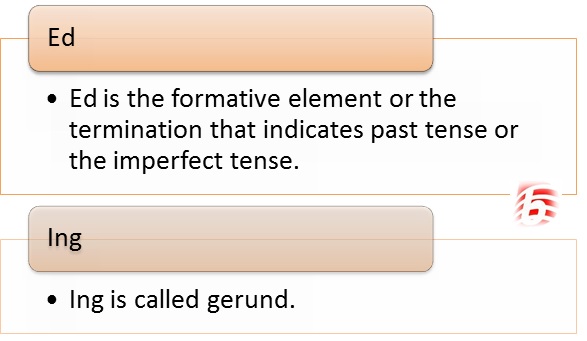Ing vs Ed
In the English language, understanding the difference between the suffixes ing and ed is essential. Ing is known as a gerund, while ed serves as a formative element or termination that indicates past tense or imperfect tense.
What is Ing?
The gerund, which indicates present continuous tense, past continuous tense, or imperfect tense, has significant differences. Ing is used to express an action happening at the time of speaking, as demonstrated in these sentences:
– I am running.
– Tony is speaking to his friend.
In both examples, the ing suffix represents a continuous action occurring while someone is speaking or narrating, making it appropriate for the present continuous tense. Ing is also used as a suffix to form the present participle of verbs.
Ing can also be used in future tense sentences, such as:
– He is going to explain the matter in the meeting.
– She is going to be appointed as the secretary.
In these instances, the ing suffix indicates a future action that will occur later.
Additionally, the ing gerund can be used in past continuous tense sentences, like these:
– He was eating food when I went to his home.
– She was running in the playground in the morning.
In both cases, the ing gerund signifies an action that took place when the speaker was present at the same or a different location. However, without the past tense of the auxiliary “be,” this participle does not indicate past tense.
What is Ed?
The formative element or verbal termination ed is employed to express past tense or an action that has already occurred, as seen in these examples:
– He looked at her with sympathy.
– She danced nicely in the cultural program.
In both sentences, the ed termination symbolizes a past action executed sometime in the past.
Ed is also essential for creating adjectives, as demonstrated in these examples:
– Talented
– Diseased
– Skilled
In each case, ed is added to the end of a noun (talent, disease, skill) to create an adjective, illustrating another vital use for ed.
What is the difference between Ing and Ed?
• Ing is a gerund, while ed is a formative element or termination that indicates past tense or imperfect tense.
• Ing is used to express an action occurring at the time of speaking.
• Ing can sometimes indicate a future action that will take place later.
• Ed is used to create adjectives.
Key Takeaways
- Ing is a gerund that indicates present continuous tense, past continuous tense, or imperfect tense, while ed is a formative element or termination that indicates past tense or imperfect tense.
- Ing is used to express actions happening at the time of speaking and can sometimes indicate future actions, while ed is used to represent past actions or create adjectives.
- Both ing and ed play crucial roles in forming different verb tenses and creating adjectives in the English language.
